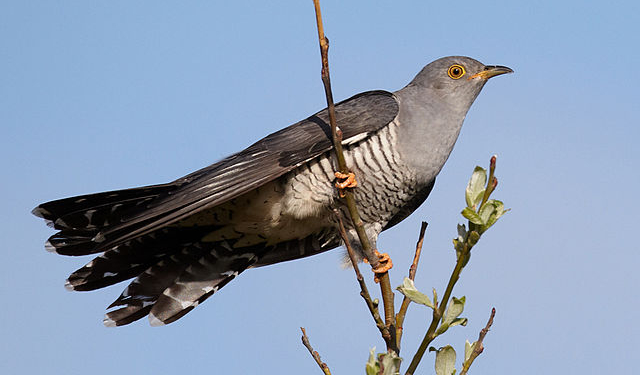Boom! Onomatopoeia is happening! And even if you don’t know what this word means yet, you’ll almost certainly have used the technique it describes, whether in your writing or in daily life. But what exactly is onomatopoeia? And when should you use it in writing? Let’s take a look.
What Is Onomatopoeia?
Onomatopoeia – pronounced on-uh-mat-uh-pee-uh – is the quality of a word sounding like the thing it describes. For instance, the word boom refers to a loud, resonant sound, such as an explosion. But it also suggests this same sound when we say it, so boom is an onomatopoeic word.
In most cases, like boom, onomatopoeic words name a sound. In others, though, the also word names the thing that makes a sound: e.g. cuckoo is the name of a type of bird as well as the sound it makes.

(Photo: Vogelartinfo/wikimedia)
Onomatopoeic terms are common in most languages. Sometimes, we even find similar terms for the same ideas in different languages.
For instance, cats go meow in English, miaou in French, and miau in German, with all three terms sounding similar. Others are less similar between languages. We see this with how the sound of a dog varies across cultures, including woof (English), gav (Russian) and bau (Italian).
In all cases, though, these words are meant to ‘imitate’ a sound.
Types of Onomatopoeic Word
We won’t try to provide a comprehensive list here, but we do have some examples of different types of onomatopoeic words in English:
Find this useful?
Subscribe to our newsletter and get writing tips from our editors straight to your inbox.
- Animal noises (e.g. woof, meow, baa, moo, neigh)
- Human vocal sounds (e.g. murmur, burp, grunt, achoo)
- Water sounds (e.g. gurgle, splash, drip, plop)
- Movement and air sounds (e.g. whoosh, zoom, fizz, swish)
- Noises made by objects and machines (e.g. boom, crash, snap, crackle, pop)
Listen out for similar onomatopoeic terms in conversation.
Onomatopoeia in Poetry
Finally, while onomatopoeia is part of everyday language, it is also very useful in poetry. This is because onomatopoeic words are often quite evocative. For instance, because boom sounds like an explosion, so you could use this work to conjure the image of something exploding.
One famous poem that uses onomatopoeia is ‘The Bells’ by Edgar Allan Poe, which is full of words like tinkle, shriek, clang, clash and roar.

Or you could explore the world of sound poetry, which often eschews conventional words entirely. We can see this in the Futurist poetry of F. T. Marinetti, who used purely sound-based lines like ‘zang-tumb-tumb-zang-zang-tuuumb tatatatatatatata picpacpampacpacpicpampampac uuuuuuuuuuuuuuu’ to evoke the feeling of being in a battle.
Regardless of how you use onomatopoeia, though, don’t forget to have your work proofread. Our editors can help you make the maximum possible impact with your words, as well as ensuring your writing is error free.



